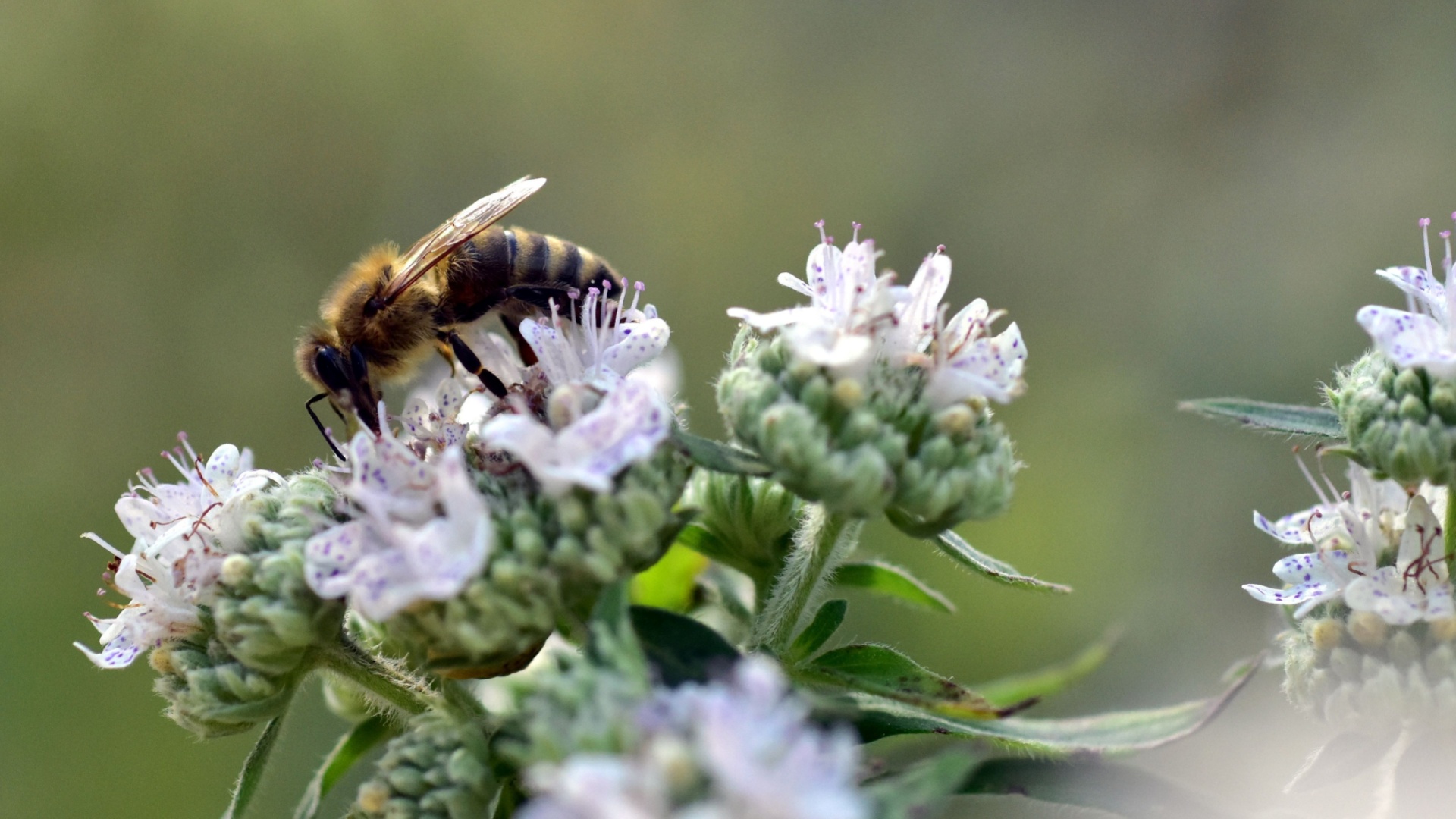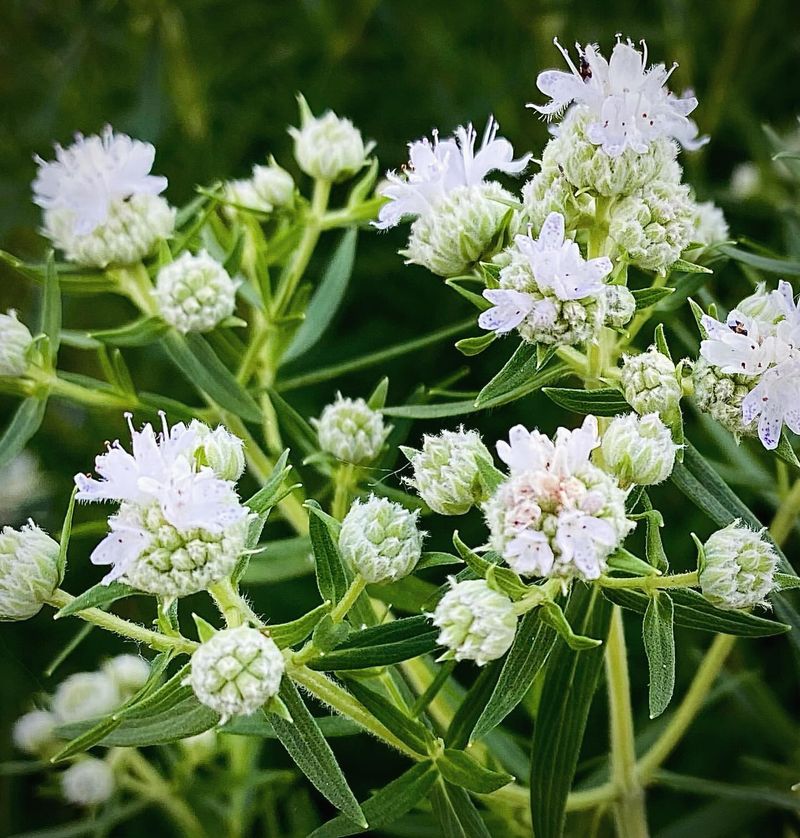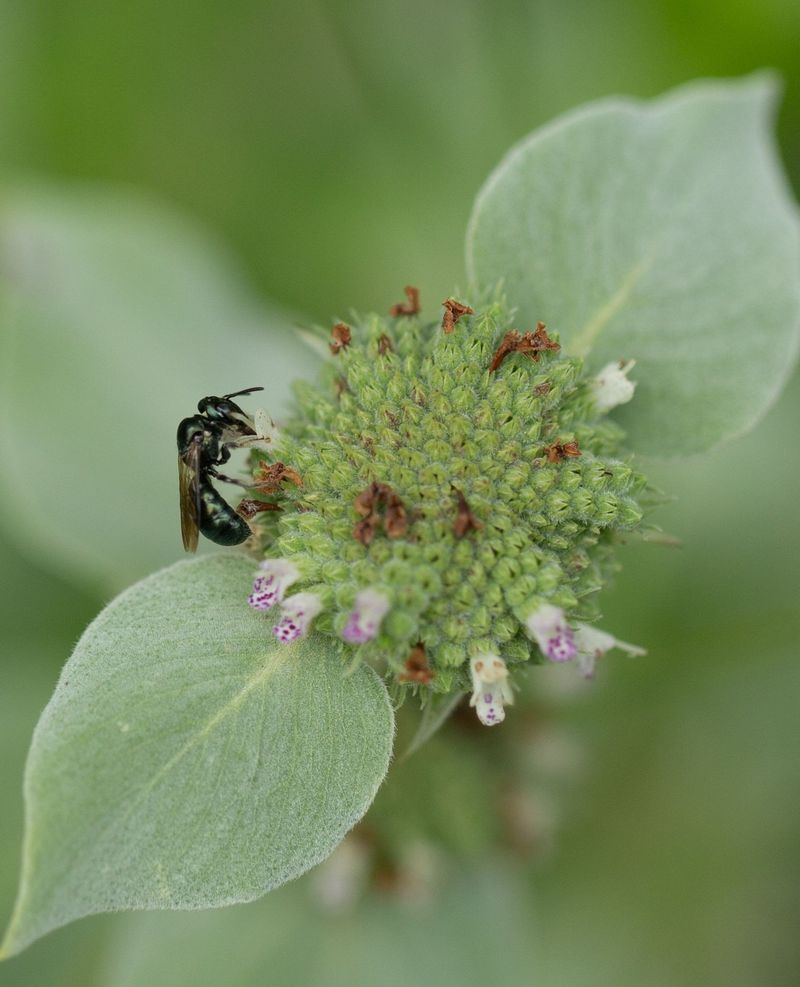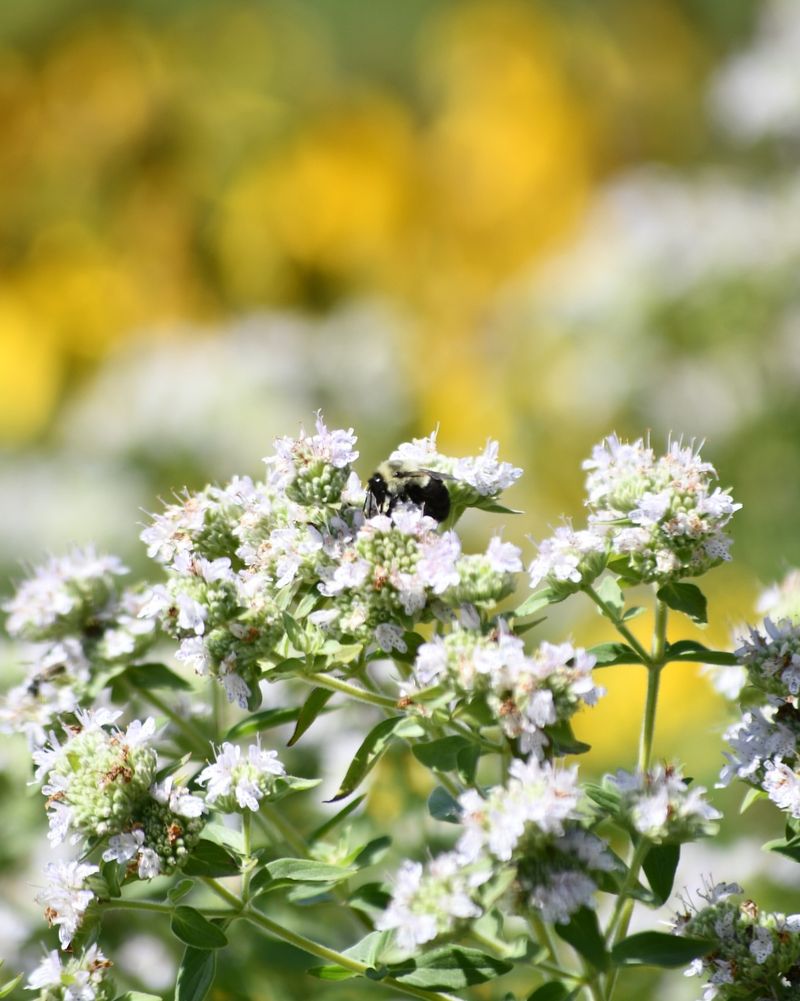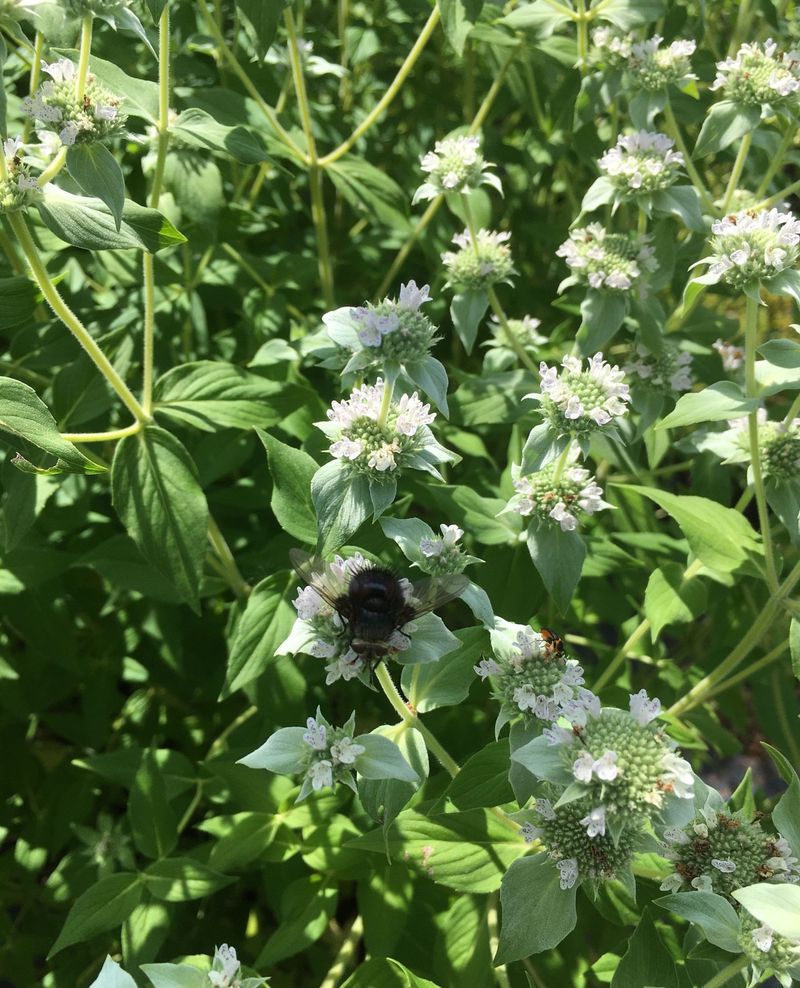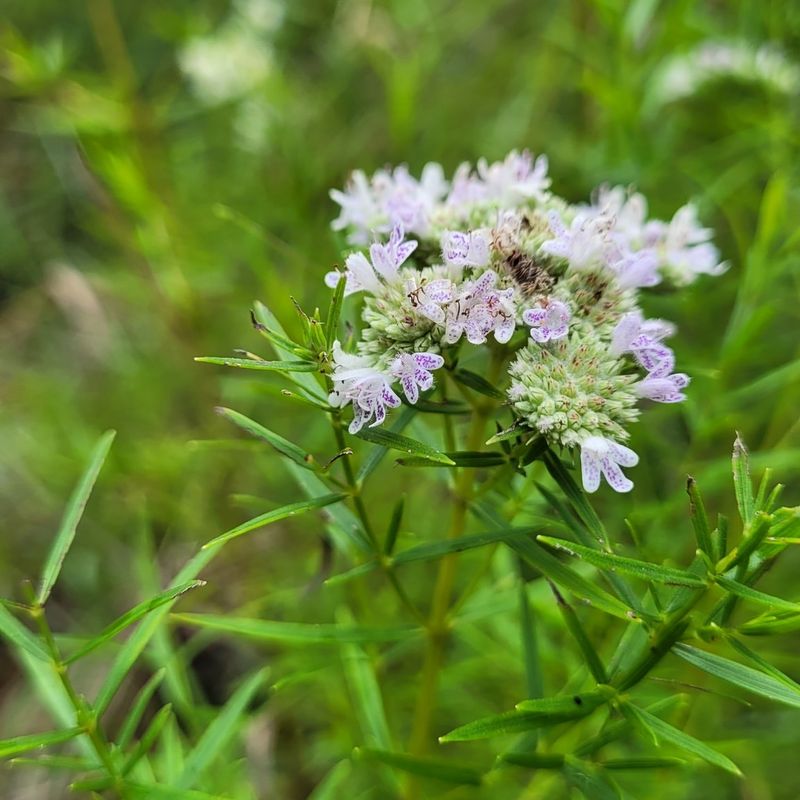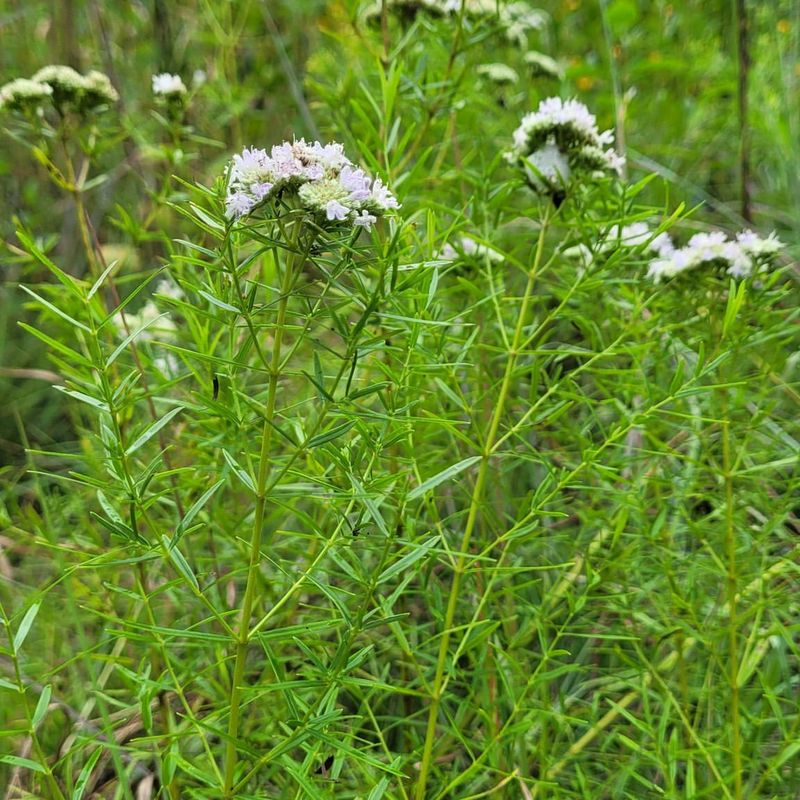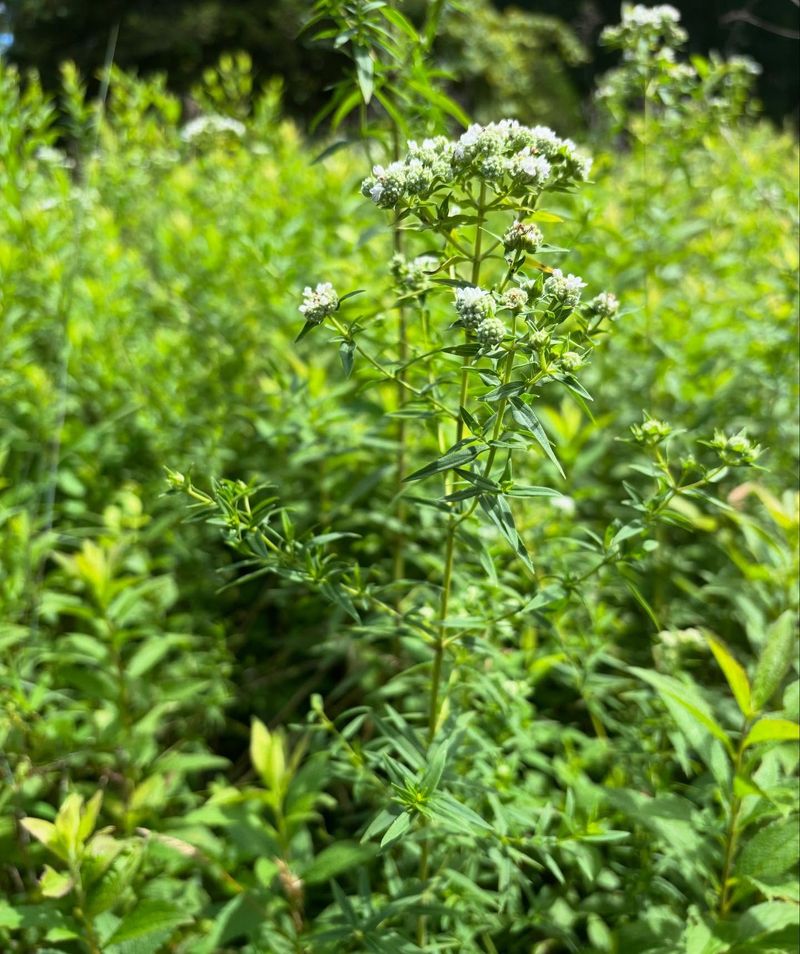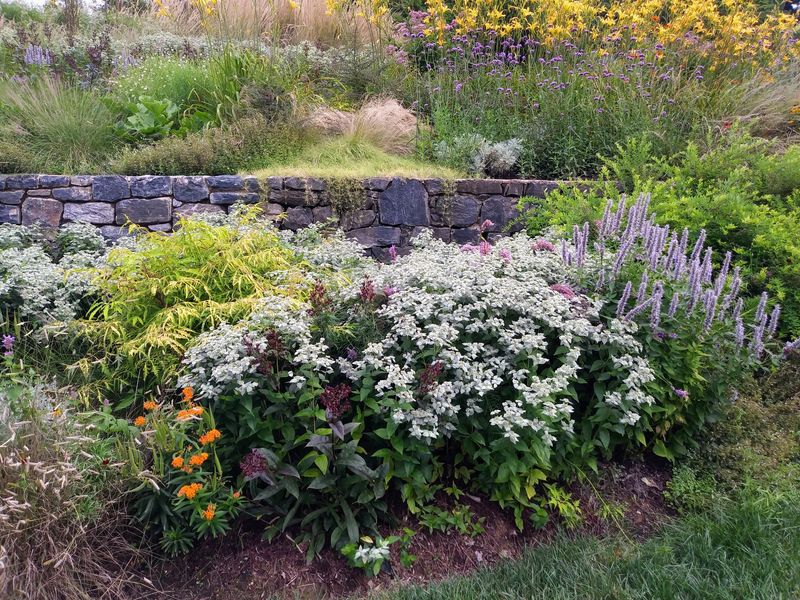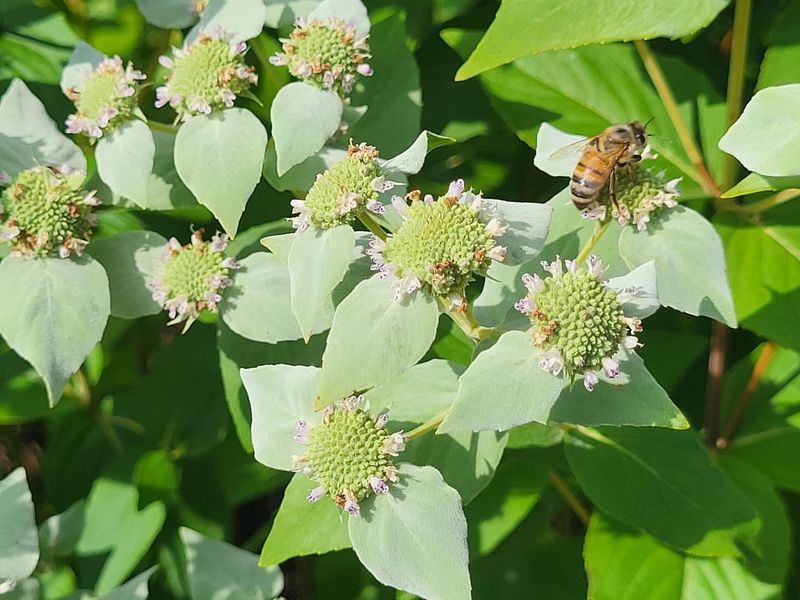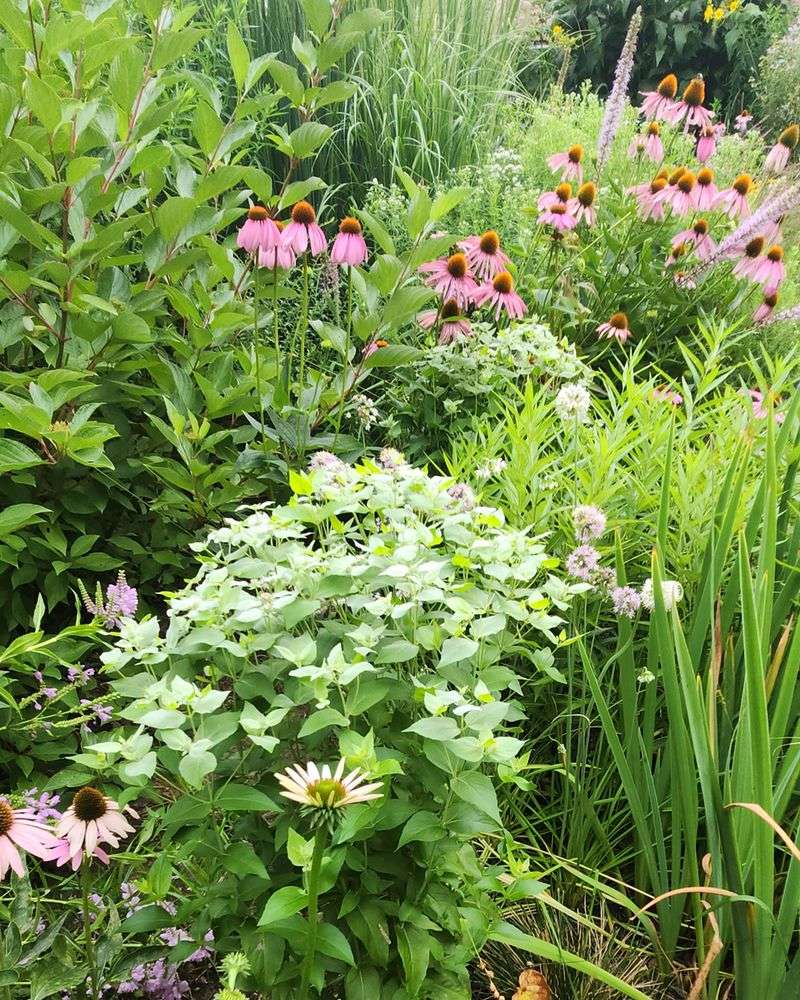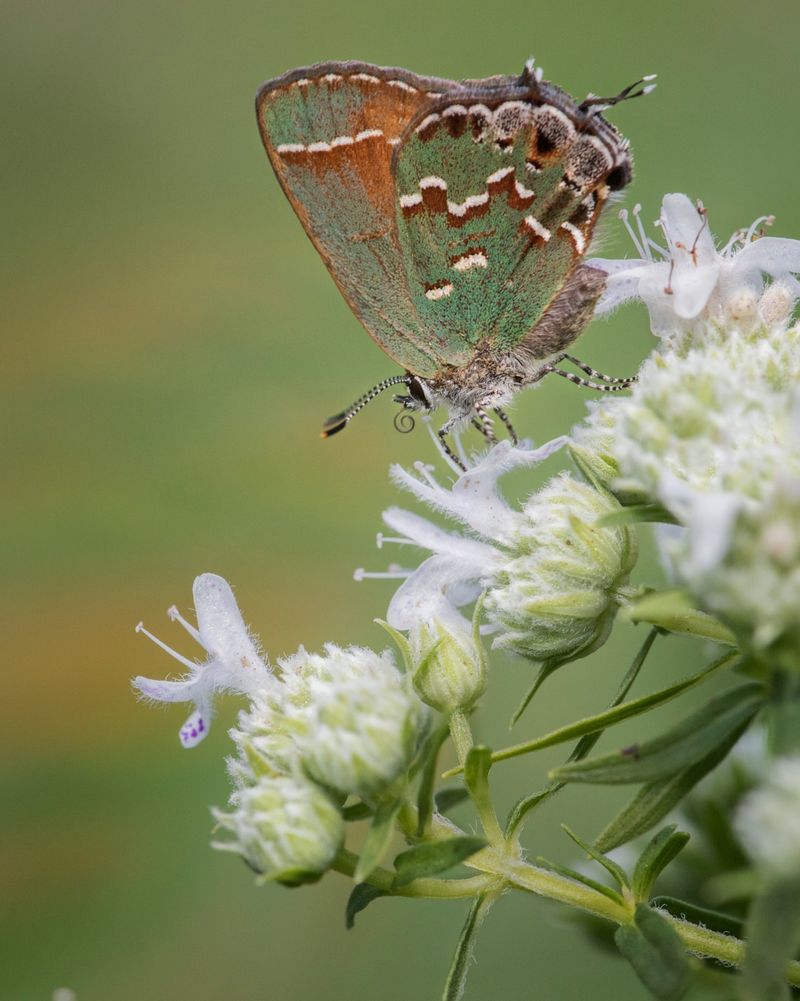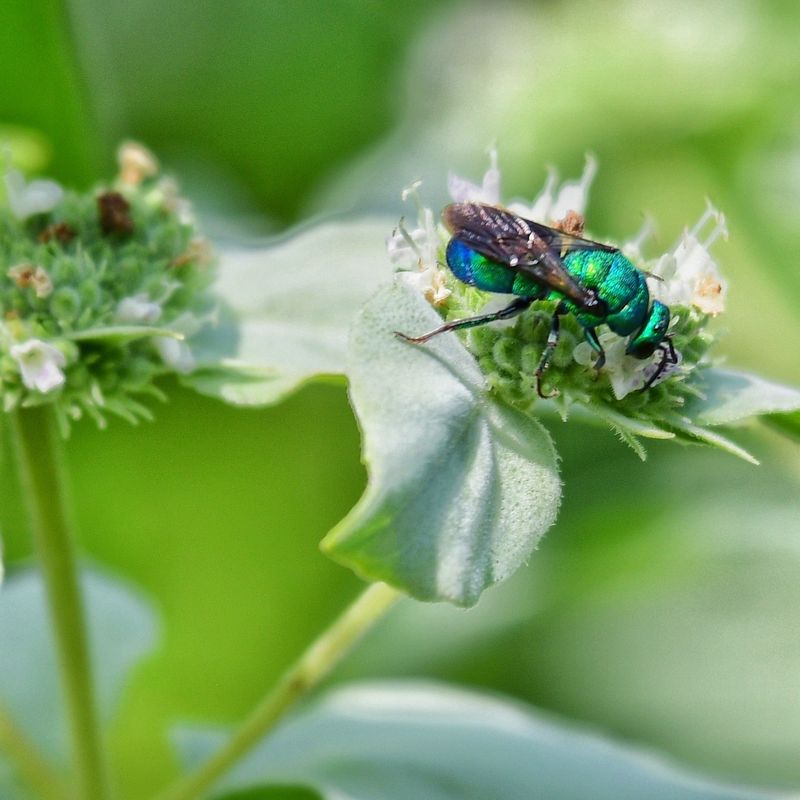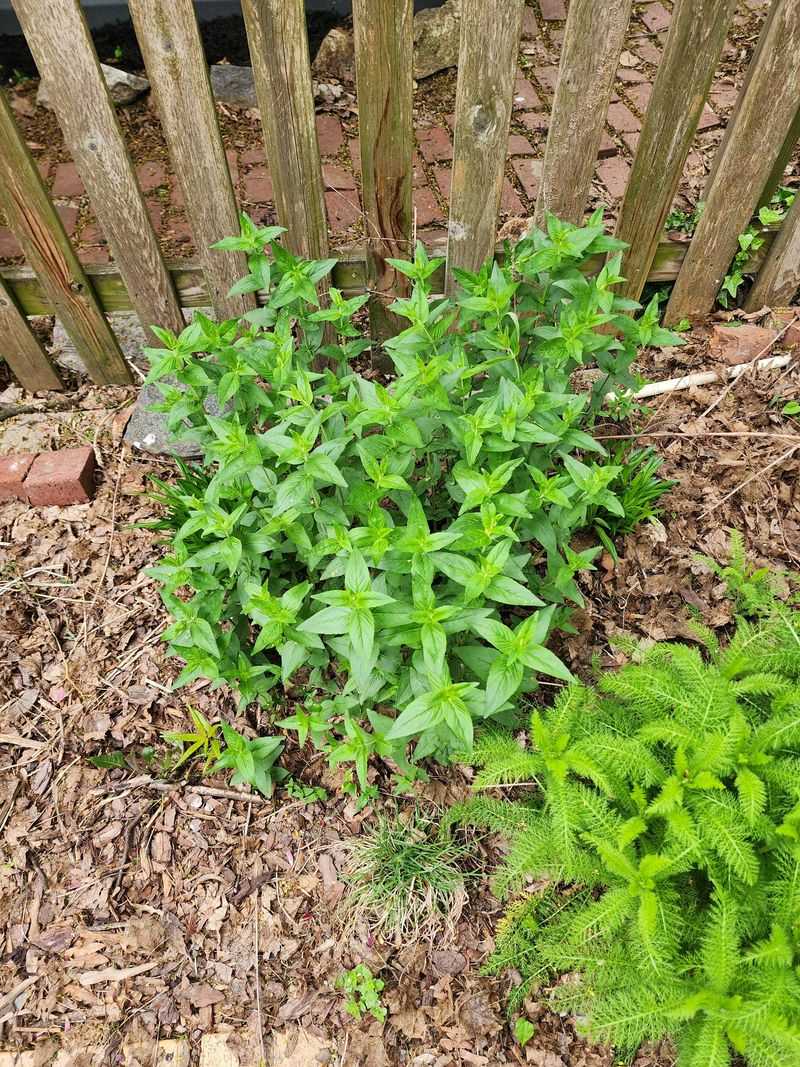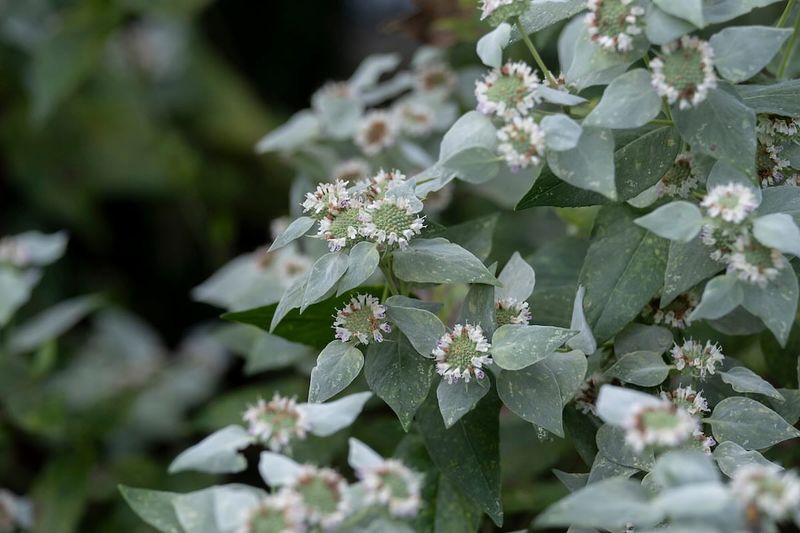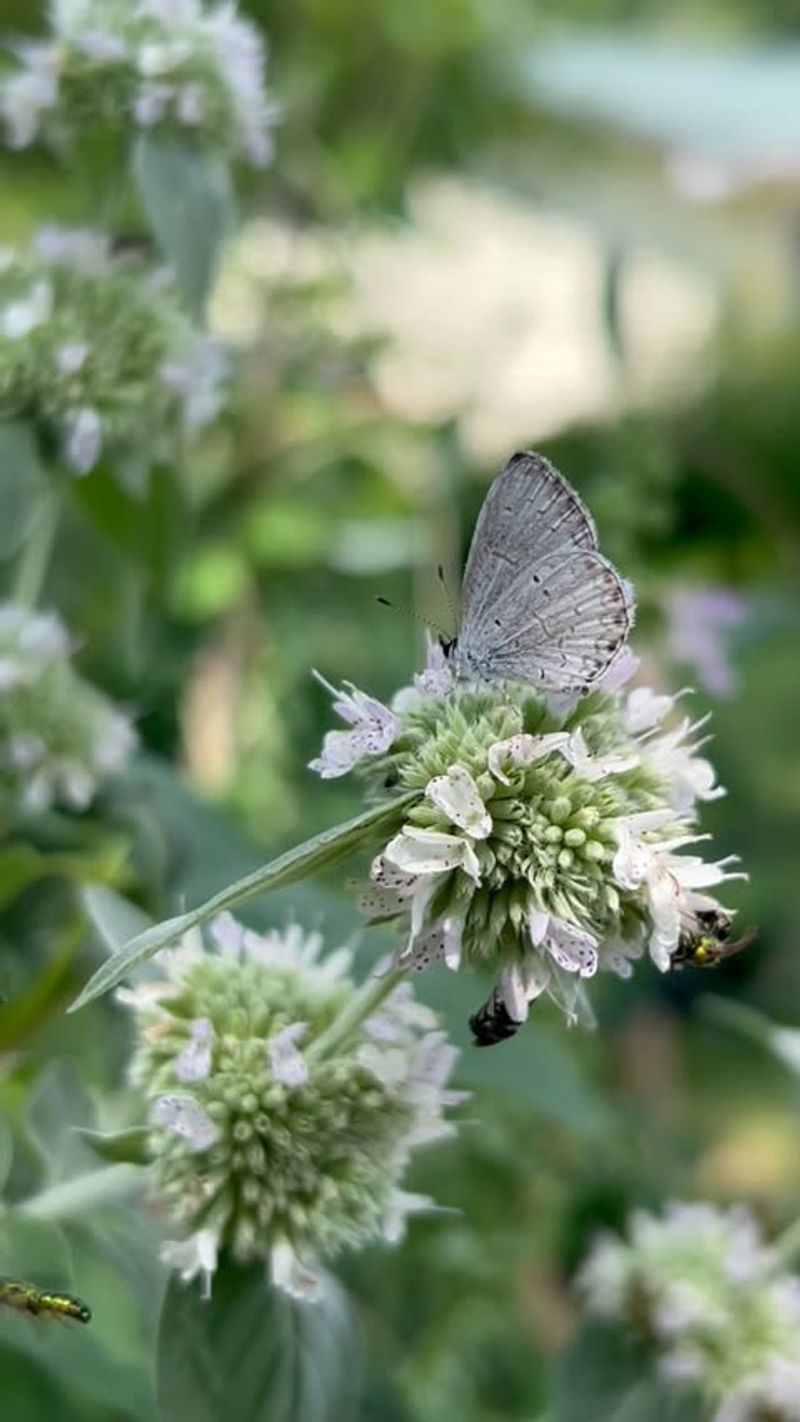Mountain mint stands as North Carolina’s buzzing hotspot during August when pollinators flock to its aromatic blooms. This native perennial herb transforms gardens into bee havens while requiring minimal care from gardeners.
Discover why mountain mint deserves a special place in your garden and how it benefits our ecosystem.
1. Native Powerhouse Plant
Mountain mint (Pycnanthemum) naturally thrives throughout North Carolina without needing special care. Its deep roots evolved in local soils for centuries, making it perfectly adapted to withstand our summer heat and occasional drought.
Unlike fussy imported plants, this native champion supports local wildlife while practically taking care of itself. You’ll rarely need to water established plants during dry spells.
2. Bee Magnet Extraordinaire
During August observations, researchers counted over 75 different pollinator species visiting mountain mint—more than any other native plant! The nectar contains a special chemical signature that acts like a dinner bell for honeybees and native bees alike.
Stand near blooming mountain mint for just five minutes and you’ll witness a remarkable diversity of buzzing visitors collecting both pollen and nectar.
3. Refreshing Minty Scent
Crush a mountain mint leaf between your fingers and breathe in its invigorating aroma. Unlike spearmint or peppermint, mountain mint offers a more complex fragrance with subtle notes of oregano and thyme mixed with traditional mintiness.
The essential oils that create this wonderful smell serve double duty—they attract beneficial insects while deterring many garden pests. Deer and rabbits typically avoid munching on these aromatic leaves.
4. Drought-Tough Survivor
Mountain mint laughs in the face of North Carolina’s August heat waves. Once established, these plants develop extensive root systems that tap into deep soil moisture reserves.
During the notorious 2007 drought that devastated many gardens, mountain mint populations continued flowering and supporting pollinators. Their natural adaptation to periodic dry spells makes them perfect for water-wise gardening and areas where irrigation is limited.
5. Several Delicious Varieties
North Carolina boasts several mountain mint species, each with unique characteristics. Narrow-leaf mountain mint (Pycnanthemum tenuifolium) produces delicate white flowers with purple spots, while hoary mountain mint (P. incanum) features silvery leaves that shimmer in summer breezes.
Virginia mountain mint (P. virginianum) grows taller and produces larger flower clusters perfect for cutting gardens. Try growing several varieties to extend blooming periods.
6. Historical Medicinal Uses
Cherokee healers treasured mountain mint for treating colds, fever, and digestive troubles long before European settlement. They created teas from the leaves that helped soothe sore throats and calm upset stomachs.
Early settlers quickly adopted these remedies, adding mountain mint to their own medicinal gardens. Many rural North Carolina families maintained stands of mountain mint specifically for home remedies well into the 20th century.
7. Culinary Herb Potential
Mountain mint adds a unique flavor dimension to summer dishes. Sprinkle the minced fresh leaves over fruit salads for a surprising taste twist or steep them in hot water for a refreshing caffeine-free tea.
Some North Carolina chefs infuse honey with mountain mint leaves, creating a distinctive sweetener perfect for drizzling over goat cheese or grilled peaches. The leaves retain their flavor when dried, providing year-round culinary possibilities.
8. Spreading Growth Habit
Mountain mint gradually expands through underground rhizomes, creating impressive colonies over time. Unlike aggressive mints that take over gardens, mountain mint spreads at a manageable pace that’s easy to control.
This growth pattern makes it excellent for naturalizing areas or creating pollinator patches. In wildflower meadows, mountain mint establishes itself among grasses and other natives, forming beautiful ecological communities.
9. Late Summer Blooming Period
August marks peak blooming time for mountain mint in North Carolina, providing critical nectar when many other plants have finished flowering. The timing couldn’t be better for honeybee colonies preparing for winter.
Bees collect mountain mint nectar to convert into honey stores that sustain them through colder months. Native bumblebees and solitary bees depend on this late-season food source to complete their lifecycle before fall arrives.
10. Easy Garden Companion
Mountain mint plays nicely with other garden favorites. Its upright growth habit and modest footprint make it perfect for mixing with coneflowers, black-eyed Susans, and goldenrod in pollinator gardens.
The silvery foliage creates beautiful contrast against darker green plants. For stunning visual impact, plant mountain mint alongside purple blazing star or blue mistflower—the color combination attracts both pollinators and admiring glances from garden visitors.
11. Butterfly Attraction Power
Beyond bees, mountain mint serves as a vital nectar source for North Carolina’s butterfly populations. Monarchs make special stops during their migration to fuel up on mountain mint’s energy-rich nectar.
Swallowtails, skippers, and fritillaries flock to these flowers throughout August. Even the tiny hairstreak butterflies, normally difficult to spot, become regular visitors, making mountain mint gardens perfect for butterfly watching and photography.
12. Beneficial Insect Haven
Beyond pollinators, mountain mint attracts an army of beneficial predatory insects. Tiny parasitic wasps, lacewings, and predatory flies visit the flowers, then hunt garden pests like aphids and caterpillars.
This natural pest control reduces the need for chemical interventions. Garden studies show significantly fewer pest problems in areas with established mountain mint plants compared to gardens without these beneficial insect magnets.
13. Low Maintenance Requirements
Mountain mint thrives on neglect once established. No deadheading, fertilizing, or special attention needed—perfect for busy gardeners or public spaces with limited maintenance budgets.
Simply cut back stems in late winter before new growth emerges, and the plants return vigorously each spring. For older patches that become crowded after several years, dividing clumps in early spring rejuvenates them and provides free plants for expanding your garden.
14. Urban Garden Champion
Mountain mint adapts beautifully to container growing, making it accessible for apartment dwellers and urban gardeners. A single large pot on a sunny balcony can support enough mountain mint to attract surprising numbers of pollinators to city spaces.
Community gardens throughout North Carolina increasingly plant mountain mint as anchor plants in shared pollinator patches. The plants tolerate urban conditions including reflected heat and occasional pollution better than many ornamentals.
15. Conservation Importance
Mountain mint plays a crucial role in North Carolina’s conservation efforts. As development reduces natural habitat, these plants provide essential resources for declining pollinator populations.
Several state parks have established mountain mint demonstration gardens to educate visitors about native plants and their ecological benefits. Home gardeners who add mountain mint contribute to wildlife corridors that connect fragmented natural areas, helping bees and butterflies navigate through developed landscapes.

